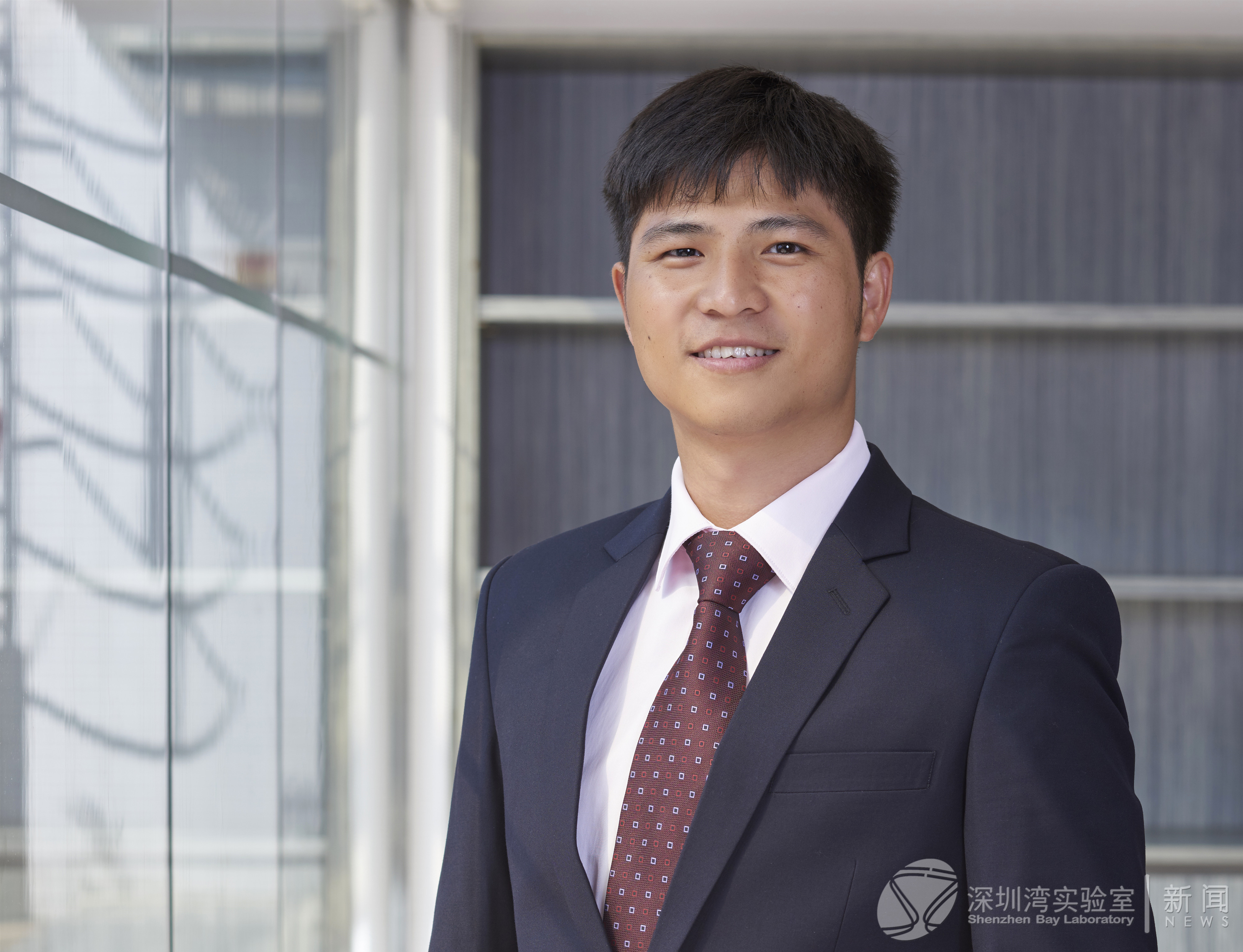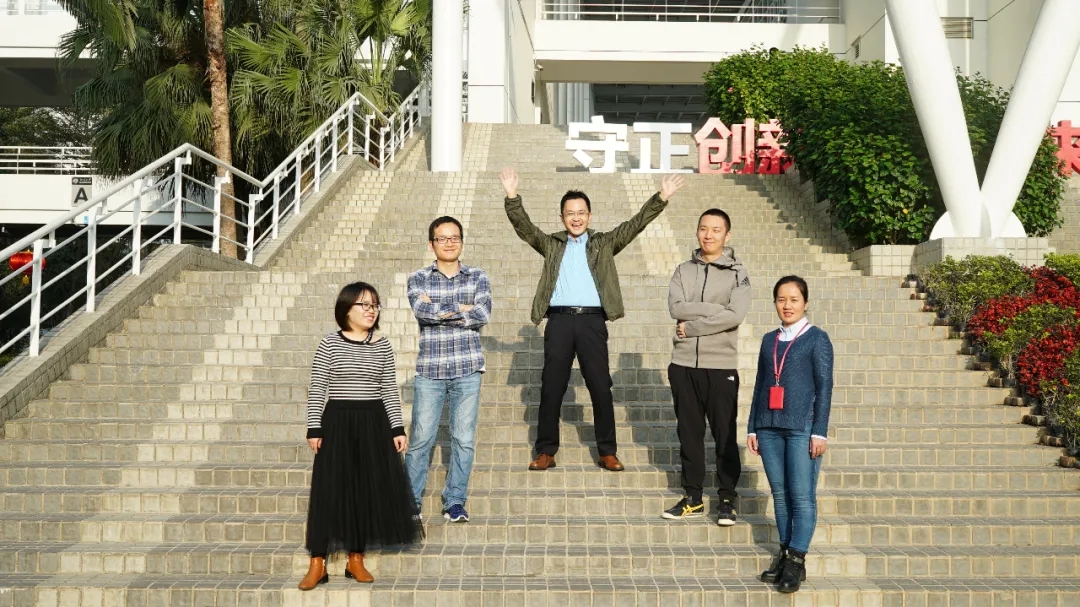In November 2019, it seemed that Shenzhen had not yet entered the autumn. Kun Sun, who was just 30-year-old, resigned as an Research Assistant Professor at Chinese University of Hong Kong (CUHK) and decided to settle down in Shenzhen, a city without winter. With the advent of summer of 2020, Shenzhen Bay Laboratory officially settled in Guangming District, and Kun also launched his scientific research in the Guangming base to achieve his dream of life - integrating DNA technology into regular physical check-up to screen early cancers.
Computer, bioinformatics and Down syndrome
Before his Ph.D. career in Hong Kong, Kun never expected that he would get involved with medicine, for his favorite specialty is engineering. During the four years when studying at University of Science and Technology of China (USTC), he had written countless codes. Like the most in his field, Kun might be a programmer and continued to work with codes in an IT company.
When Kun graduated from USTC in 2010, a professor from the CUHK suggested him to study bioinformatics, an inter-discipline of computer and biology sciences, in Hong Kong. When talks about bioinformatics, Kun always has lots of topics to share. What the most charming in this inter-discipline is that you can stand on the giants’ shoulders, open the door towards a new world, and produce unexpected sparks.
In 2001, Human Genome Project profiled the human genome with 3 billion pairs of nucleotides, which was of great significance for unraveling the mysteries of life. In 2005 and 2006, the high-throughput parallel sequencing machines were available in the market. When the data increase by hundreds times, it becomes impossible to analyze the data analysis and perform statistics manually; instead, the data must be processed by a computing machine. Numerous DNA sequences have been obtained by sequencing, which requires various computation-intensive steps towards human-interpretable results. As a result, bioinformatics, an interdisciplinary, emerges and become more and more important.
From a master to a Ph.D., then post-doctorate, Kun learned from Professor Sun Hao Sun and Professor Dennis Lo, and opened the door towards genetic technology. As the founder of non-invasive prenatal testing (NIPT) and the discoverer of the natural phenomenon that fetal DNA present in the maternal peripheral blood, Professor Lo is the pioneer in screening the unborn fetus for Down syndrome and other genetic diseases using a tube of blood from the pregnancy, which imposes no risk to the fetuss. Such technology has greatly reduced the birth rate of children with Down syndrome and has benefited numerous families.
Early cancer diagnosis and liquid biopsy industry
As a simple blood test could diagnose genetic diseases of the fetus, can this technology be applied in more fields? Everyone is thinking about this question and moves to cancer, a disease that people are most concern about.
In fact, after non-invasive prenatal testing, Kun followed his mentor to explore the potential of blood-based technologies in early diagnosis and treatment surveillance of cancers. Kun had been engaged in the research of bioinformatics and liquid biopsies based on plasma cell-free DNA in the peripheral blood for a long time. With more than ten years’ experience in biomedical data analysis, Kun had published more than 50 papers, which had been cited more than 3,600 times, and participated in application of 7 international patents. Kun is pleased to share more than 10 bioinformatics software for free usage worldwide, some of which have made remarkable impact in the fields of lncRNA identification and functional studies.
But these achievements belong to the past. For this young man, Kun needs to create a future of his own. In November 2019, Kun moved to Shenzhen from Hong Kong and joined the Shenzhen Bay Laboratory as a full-time Junior Principal Investigator.
What to study? To put it simply, it is to draw a tube of blood to predict whether there is a tumor growing in an organ of the patient by analyzing if the plasma DNA is “abnormal” or not. Nowadays, the incidence of cancer is increasing year by year. If the tumor can be discovered at the early stage, both the cure and survival rates could be greatly increased. This is a sharp sword that helps to win the war between human beings and diseases.
From the perspective of international market, there are also a lot of research on cancer diagnoses. At present, Food and Drug Administration (FDA) has mandated the genetic testing of EGFR and KRAS before medication in certain cancers. Moreover, National Comprehensive Cancer Network (NCCN) has incorporated EGFR, KRAS, ERCC1, RRM1, HER2 and other gene testing into cancer treatment guidelines.
Research, “cold stool” and scientist spirit
After joining Shenzhen Bay Laboratory, Kun traveled between Nanshan and Guangming District, looking for cooperative hospitals, recruiting volunteers, hiring laboratory personnel, doing experiments, analyzing data, and writing papers. Kun said that there is no shortcut in research, everything is based on the experiments and data, which takes lots of time and efforts.
In theory, the technology of “liquid biopsy” (diagnosing cancer through blood testing) is safer and more convenient than conventional tissue biopsy. The only problem is to improve the accuracy to meet strict clinical requirements, which requires a large number of samples to prove. Once successful, it will bring great scientific value; more importantly, it can improve the health problems of numerous people.
But before that, it still has a long way to go, and scientists are always lonely. Are you afraid of “sitting on a cold bench” ? Devoting the whole life to research, however, the result in the end may not be what you expect? Kun said that he is not afraid of it, because he firmly believes that his path is correct. Research is a long-term project. Many scientists have dedicated their lives to making a small step for the advancement of science and technology, while such a small step might be a leap for human development. His mentor also had waited for 15 years, and his technology was finally promoted all over the world. Time will prove the greatness of one’s work.
Subway, Shenzhen Bay Laboratory and origami
Why chose Shenzhen and Shenzhen Bay Laboratory? Shenzhen is a city with abundant professionals and resources in health. Recalling his interview, Kun said that although Shenzhen Bay Laboratory was just established, many top-level scientists had gathered here, and its free academic atmosphere were exactly what he dreamed of. Moreover, Kun felt that Shenzhen has an inherent innovative soul, and the market transformation is also fast. Taking the genetic testing as an example, there were hundreds of industry-related companies in Shenzhen. Some provide sequencing materials, some provide testing equipment, and others may perform chemical extraction; therefore, as long as you need, you can “go into action” anytime and anywhere.
As one of the second batch of Guangdong Provincial laboratories, Shenzhen Bay Laboratory is jointly organized by Science, Technology and Innovation Commission of Shenzhen Municipality and Peking University Shenzhen Graduate School, and it is planned to carry out frontier research on the biomedicine and solve major scientific problems in the field of population and health in life science, biomedical engineering and innovative drug discovery. For Kun, these directions highly match with his research interest.
Moreover, it is necessary to attract young scientists like Kun to cultivate and build a “reserve force” of the national laboratory. Not long ago, Shenzhen Bay Laboratory officially settled in Guangming District. For the laboratory, this is a new start. For the Junior Principal Investigators like Kun, it is a new journey.
Before this long journey, this young man was not much different from those hard-working adultescents in Shenzhen. He takes the subway to travel between home and laboratory every day. When feels stressed, he also has his own hobbies. Kun likes origami. He said that the handwork can give his brain a break, so that he can conceive a better tomorrow.
I do believe that the future of Shenzhen will be made up of countless young backbone forces like Kun Sun, and everyone who works hard, no matter what position they are in, can achieve their dreams in Shenzhen.

Biography:
Dr. Kun Sun has been engaged in bioinformatics and blood-based liquid biopsy in cancer diagnosis for more than 10 years. He has published 46 papers, 27 of which Dr. Sun serves as the (co-)first and/or (co-)corresponding author, including papers published on Cancer Discovery, Genome Research, PNAS, EMBO Journal, etc. The total citation of Dr. Sun’s publications is more than 2,600.
Dr. Sun's research area:
- Cancer liquid biopsy
- Bioinformatics/Computational biology
- Long noncoding RNA
- Big data mining, Artificial Intelligence (AI), and data visualization
Explore more about Dr. Sun: http://sunkun-lab.szbl.ac.cn/













